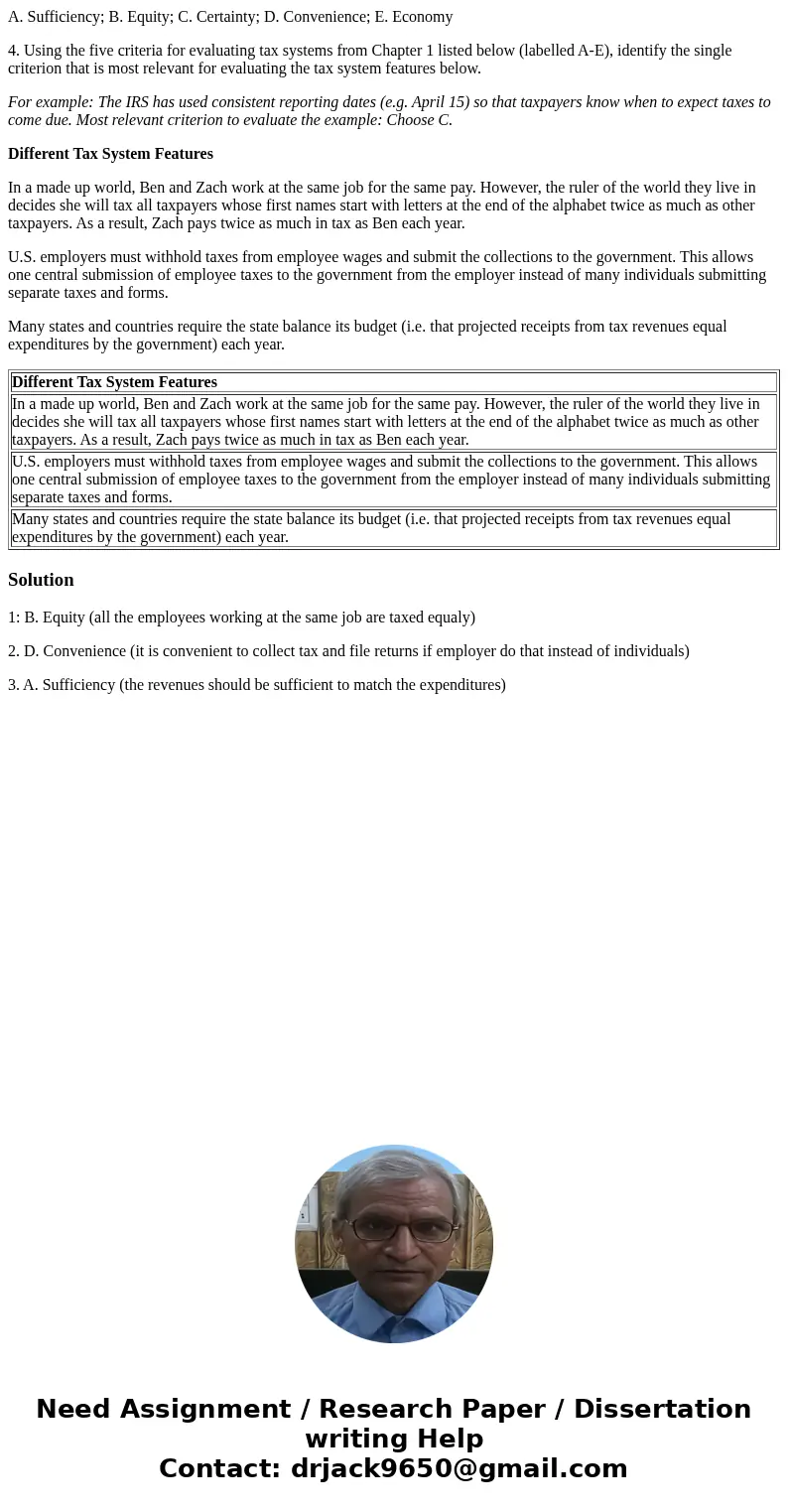A Sufficiency B Equity C Certainty D Convenience E Economy 4
A. Sufficiency; B. Equity; C. Certainty; D. Convenience; E. Economy
4. Using the five criteria for evaluating tax systems from Chapter 1 listed below (labelled A-E), identify the single criterion that is most relevant for evaluating the tax system features below.
For example: The IRS has used consistent reporting dates (e.g. April 15) so that taxpayers know when to expect taxes to come due. Most relevant criterion to evaluate the example: Choose C.
Different Tax System Features
In a made up world, Ben and Zach work at the same job for the same pay. However, the ruler of the world they live in decides she will tax all taxpayers whose first names start with letters at the end of the alphabet twice as much as other taxpayers. As a result, Zach pays twice as much in tax as Ben each year.
U.S. employers must withhold taxes from employee wages and submit the collections to the government. This allows one central submission of employee taxes to the government from the employer instead of many individuals submitting separate taxes and forms.
Many states and countries require the state balance its budget (i.e. that projected receipts from tax revenues equal expenditures by the government) each year.
| Different Tax System Features |
| In a made up world, Ben and Zach work at the same job for the same pay. However, the ruler of the world they live in decides she will tax all taxpayers whose first names start with letters at the end of the alphabet twice as much as other taxpayers. As a result, Zach pays twice as much in tax as Ben each year. |
| U.S. employers must withhold taxes from employee wages and submit the collections to the government. This allows one central submission of employee taxes to the government from the employer instead of many individuals submitting separate taxes and forms. |
| Many states and countries require the state balance its budget (i.e. that projected receipts from tax revenues equal expenditures by the government) each year. |
Solution
1: B. Equity (all the employees working at the same job are taxed equaly)
2. D. Convenience (it is convenient to collect tax and file returns if employer do that instead of individuals)
3. A. Sufficiency (the revenues should be sufficient to match the expenditures)

 Homework Sourse
Homework Sourse